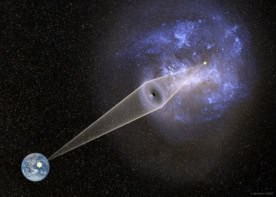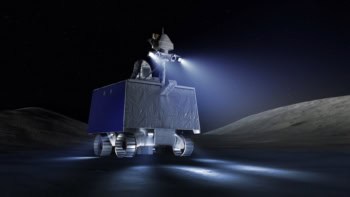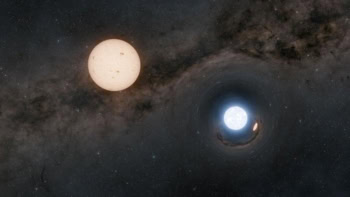The universe undergoes an endless series of big bangs and cosmic crunches separated by periods of expansion and contraction, according to the latest cosmological theory. Paul Steinhardt of Princeton University and Neil Turok of Cambridge University claim to have solved the problems that have plagued theories of a ‘bouncing’ universe since the 1930s. According to the pair, we are about 14 billion years into the current cycle of cosmic expansion (P Steinhardt and N Turok 2002 Science to appear).

Most cosmologists believe that the universe began with the big bang about 14 billion years ago, and has been expanding ever since. Many astronomical studies – including observations of receding galaxies and the cosmic microwave background – support this view. But this ‘standard theory’ has a glaring shortcoming: it cannot explain the big bang itself, or the conditions that created it.
Theories of ‘bouncing’ or cyclic universes, however, do not predict a beginning or an end of time, and therefore do not need to explain them. Early advocates of a cyclic model thought that the universe must shrink into a singularity – a point of infinite density and temperature – before exploding in a new big bang. But this idea proved too difficult to explain, and most theorists rejected the concept of a cyclic universe.
Now Steinhardt and Turok say that – according to ‘M-theory’ – the universe need not pass through a singularity between a big crunch and a big bang. Supported by most cosmologists, M-theory says that space–time has eleven dimensions, of which we perceive four: three in space and one in time. Our four-dimensional ‘brane’ – short for membrane – is moving among the remaining dimensions or branes, which are hidden at very small or very large length scales.
The theory says that the matter we see in the universe is confined to our local brane and that matter also exists in other branes. Steinhardt and Turok believe that a big crunch/big bang occurs when two such branes collide. They say that the density of matter is perfectly finite during such a collision, and that a singularity only occurs in the sense that the dimension that separated these branes disappears briefly during the collision.
The effect of gravity on matter in different branes could explain why galaxies behave as though they contain more matter than we can detect – a phenomenon that led to the concept of ‘dark matter’.
The researchers also say that their theory depends upon ‘dark energy’, another concept that is not explained by the standard model. Dark energy is a kind of repulsive gravitation, which was proposed to explain recent observations that show the universe is expanding at an accelerating rate. In the new cyclic model, dark energy is needed to dilute entropy during periods of cosmic expansion.
“If our conjecture is correct, it transforms cosmology because the big bang isn’t the impenetrable barrier it once seemed,” Turok told PhysicsWeb. He admits that the theory needs more work to solve several important technical problems, but says “philosophically, the model is so appealing that I think it will be here to stay for some time.”



